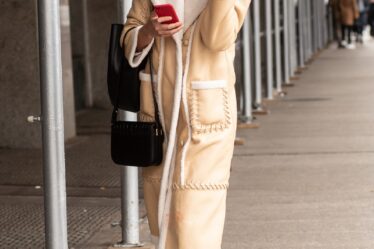
Follow The Debrief wherever you listen to podcasts.
Background:
The wholesale model, while offering exposure and some upfront revenue, did not always have the best terms for vendors. Department store bankruptcies, pandemic-induced store closures and the boom in online shopping pushed brands further towards their direct-to-consumer and e-commerce businesses to drive revenue.
But that’s beginning to change. As shoppers return to stores, brands are seeing value in ramping up their partnerships with multi-brand retailers — this time on better terms. “What I’m hearing across the board from both brands and retailers is that this vendor-retailer relationship is more collaborative than ever,” said BoF retail correspondent Cathaleen Chen.
Key Insights:
- There are multiple factors pushing brands back to wholesale. Among them, the growth of e-commerce, which has slowed after spiking in 2020, and the growing consumer appetite for curated, in-person shopping experiences that allow them to stumble upon new designers. “That discovery is still so important, and now [shoppers are] relying on a cool third-party retailer to sort of facilitate that discovery,” said Chen.
- “Wholesale is very American,” noted Chen, making it an attractive vehicle for international labels looking to enter the lucrative US market.
- Brands are having more of a say over how their products are marketed through retailers, like sharing campaign assets or designing shop-in-shop setups.
- Both parties are also increasingly open to exploring other models like concession, consignment — more typical to European department stores — and drop-shipping, where the brands themselves are responsible for fulfilling orders made through retailer’s websites.
- Brands are returning to wholesale, but not at the expense of their direct-to-consumer and retail offerings. “I think we’re at a point where everybody has a more well-rounded business so that if things do go bad again in whichever channel, they can be agile and adapt very quickly,” said Chen.
Additional resources:
- How to Take a Brand From Local to Global: For most of its first two decades, Farm Rio was little known outside its native Brazil. But since entering the US in 2019, the dressmaker has made a splash in contemporary womenswear, with sales reaching $50 million in its new market last year. Next up: Europe.
- Searching for the Next Barneys: American luxury retail has changed, but customers are still hungry for the special feeling only an exceptional multi-brand store can offer. Can a crop of upstarts and a few savvy incumbents succeed where others have failed?
- Inside Neiman Marcus’ Post-Bankruptcy Playbook: The luxury department store company plans to win shoppers with redesigned stores, faster shipping and digitised personal shopping.


